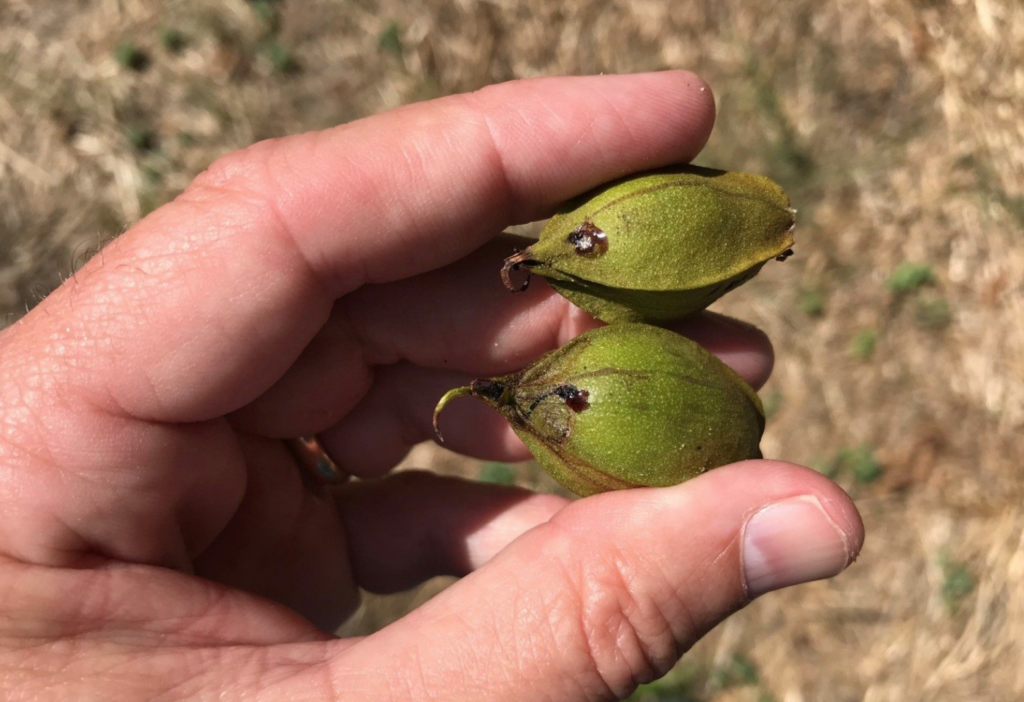
Jul 8, 2022Nut curculio in pecan; Best to tolerate the damage if light
You may notice some nut drop in your orchards at this time. This can occur for a number of reasons, including rainfall after a long hot, dry period and natural drop on certain varieties. One thing we are seeing at the moment is drop from nut curculio. The damage from nut curculio (a nut weevil) is very conspicuous. Nuts will have a “tobacco-juice” stain on the outside of the shuck where the curculio has punctured the nut.
Nut curculio is generally only a significant problem in older orchards with a past history of severe injury. In most orchards, nut curculio is relatively light and goes unnoticed or is often attributed to shuckworm. Formerly, chlorpyrifos was the material of choice for curculio and was used this time of year by growers who had a past history of curculio damage. However, chlorpyrifos is no longer legal for use on edible crops, so the only choices for curculio control now are pyrethroids and carbaryl.
Chlorpyrifos was bad enough on beneficial insects and would generate temporary flare-ups of aphids and mites. But, using a pyrethroid or carbaryl at this point in the season could be disastrous for aphid and mite management the rest of the season and that can get very expensive quickly. If you have a serious problem with curculio, you may still need to treat for this pest. But, in most cases, I am of the opinion that you are better off to tolerate a little curculio damage rather than have to spend the rest of the season fighting a losing battle against aphids and mites. If you have more than 50-60% bearing terminals on the trees, you probably need a few nuts thinned anyway, so a little drop from curculio won’t be disastrous and could even be beneficial in the end.
– Lenny Wells, University of Georgia
Damage from nut curculio. Photo: Lenny Wells, University of Georgia







